One of my favorite Japanese dishes, sunomono (酢の物) is a Japanese cucumber salad served with seaweed (wakame) and tossed in a vinegar and soy sauce based dressing. It’s very light, refreshing, puckery sour and a little briny. This is an easy recipe that only requires 7 ingredients and 20 minutes!
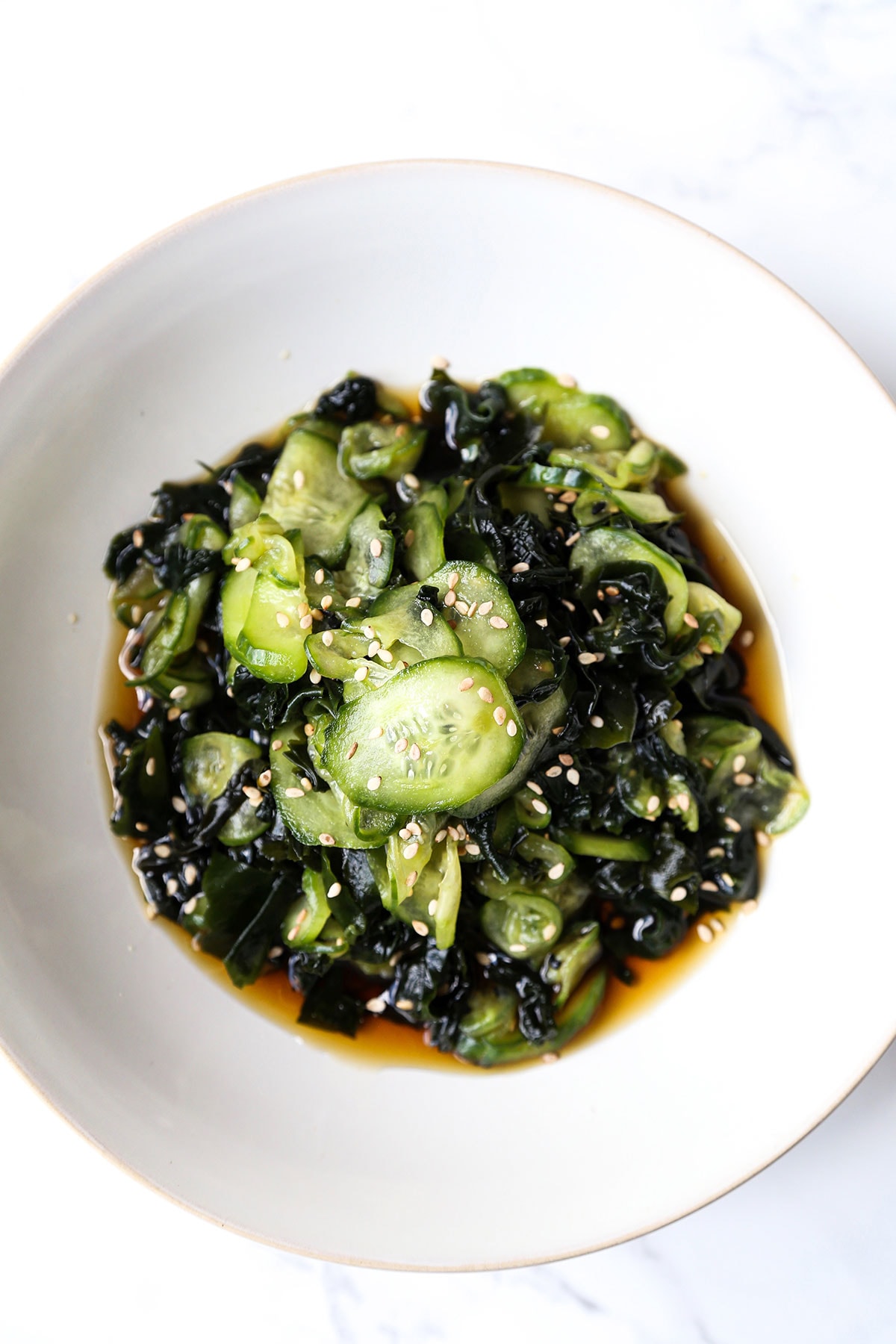
Table of contents
What is Sunomono?
The word su means vinegar in Japanese and sunomono (酢の物) basically translates to food/things dressed in vinegar.
Sunomono is usually served in small bowls at the beginning of a meal or as part of a main meal, always served as a side. It’s a wonderful dish to serve in the summer since vinegar helps the body cool down from warm temperatures. The fact that it’s also very light in calories and virtually fat-free makes it easy to digest.
This recipe is a classic kuri-su, which literally mean cucumber vinegar. It’s served with sesame seeds and shirasu. If boiled fish isn’t your thing, you can either skip it or add your own toppings. Sunomo is extremely versatile! I’ve served it with cherry tomatoes, cucumber and tofu, boiled shrimp, etc…
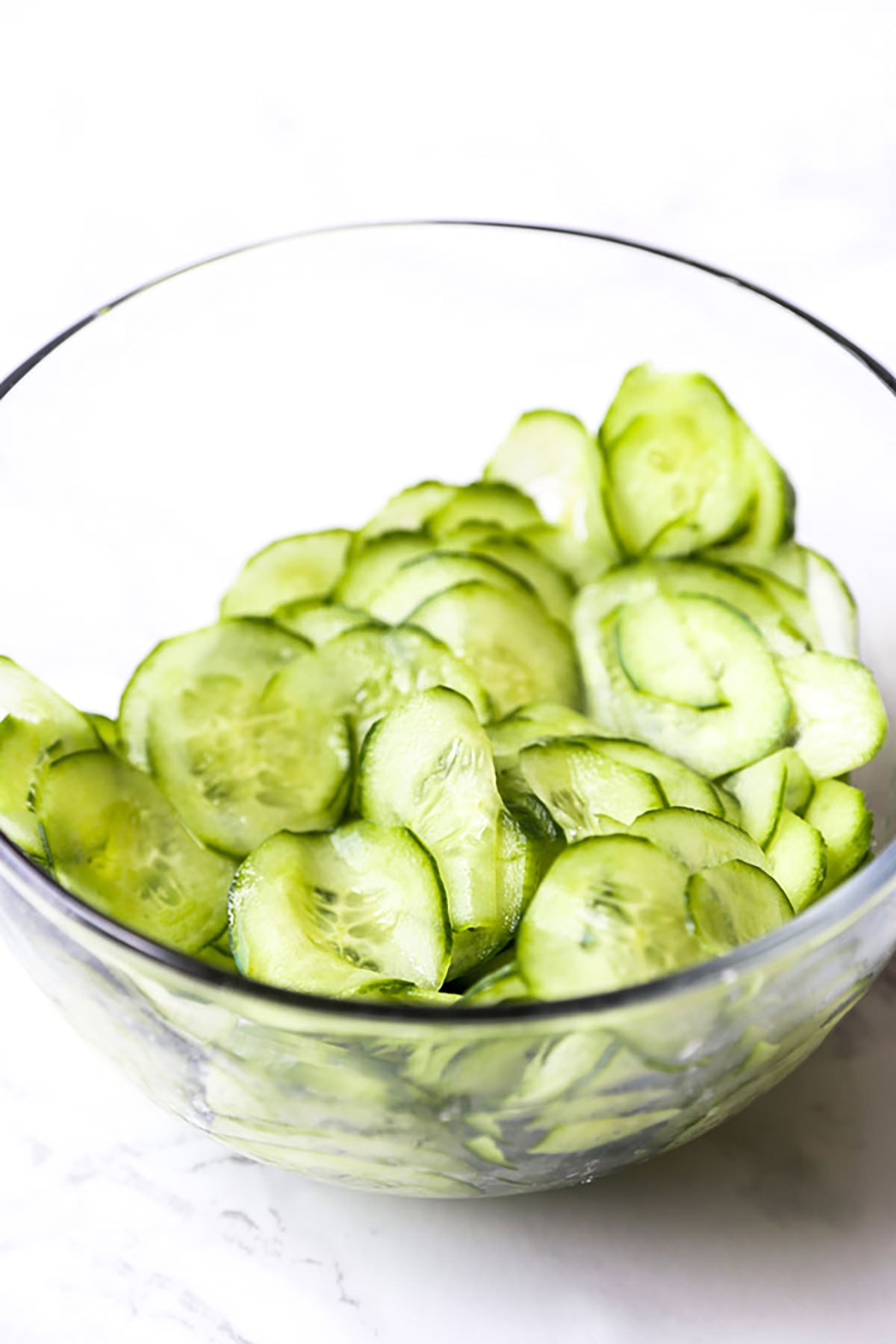
Sunomono Ingredients
- Cucumber: This salad is all about cucumber! So find good, crunchy cucumbers for the best sunomono.
- Wakame: Wakame seaweed adds a briny taste and a gelatinous texture to the salad. Don’t over soak wakame as it will get slimy, make sure to follow the instructions on the package!
- Soy Sauce: Use tamari or liquid amino for a gluten-free salad. I use the Yamasa brand which I prefer over Kikkoman because of its milder taste. Kikkoman is a little too salty for me (my Japanese mother also finds it too salty).
- Dashi: Many sunomono recipes don’t use dashi but I absolutely love it. I think it mellows the acidity of the rice vinegar and marries beautifully with the briny wakame.
- Rice Vinegar: Choose plain rice vinegar such as Nakano’s Natural Rice Vinegar or Mizkan.
- Mirin: Mirin adds a little sweetness that’s similar to sake. It’s milder and more complex than granulated sugar. Most mirin sold in the US is alcohol-free even though the traditional real mirin contains alcochol. You might have to look in specialty shops to find the real thing, I haven’t been able to get my hands on it here in the US.
- Sesame Seeds: To add a little nuttiness.
- Shirasu (Baby Sardines): The flavor of shirasu is quite mild which is why it pairs so nicely with a dish like sunomono that’s already assertive in flavor.
Best Type of Cucumber for Sunomono
Japanese cucumbers are the type traditionally used to make sunomono. They are long and thin and very crunchy. Because the skin is also thin, it doesn’t need to be peeled. When I can’t find Japanese cucumbers, Kirby and Persian cucumbers are also good alternatives – since they can hold on to the acidic dressing and remain crunchy. Lastly, English cucumber can also work – but because of its wider circumference, will need to be sliced in half lengthwise before being thinly chopped. In fact, I use all the above types interchangeably with sunomono – and other cucumber recipes like cucumber gazpacho – where I need crunchy texture and a lot less moisture than regular pole cucumbers.
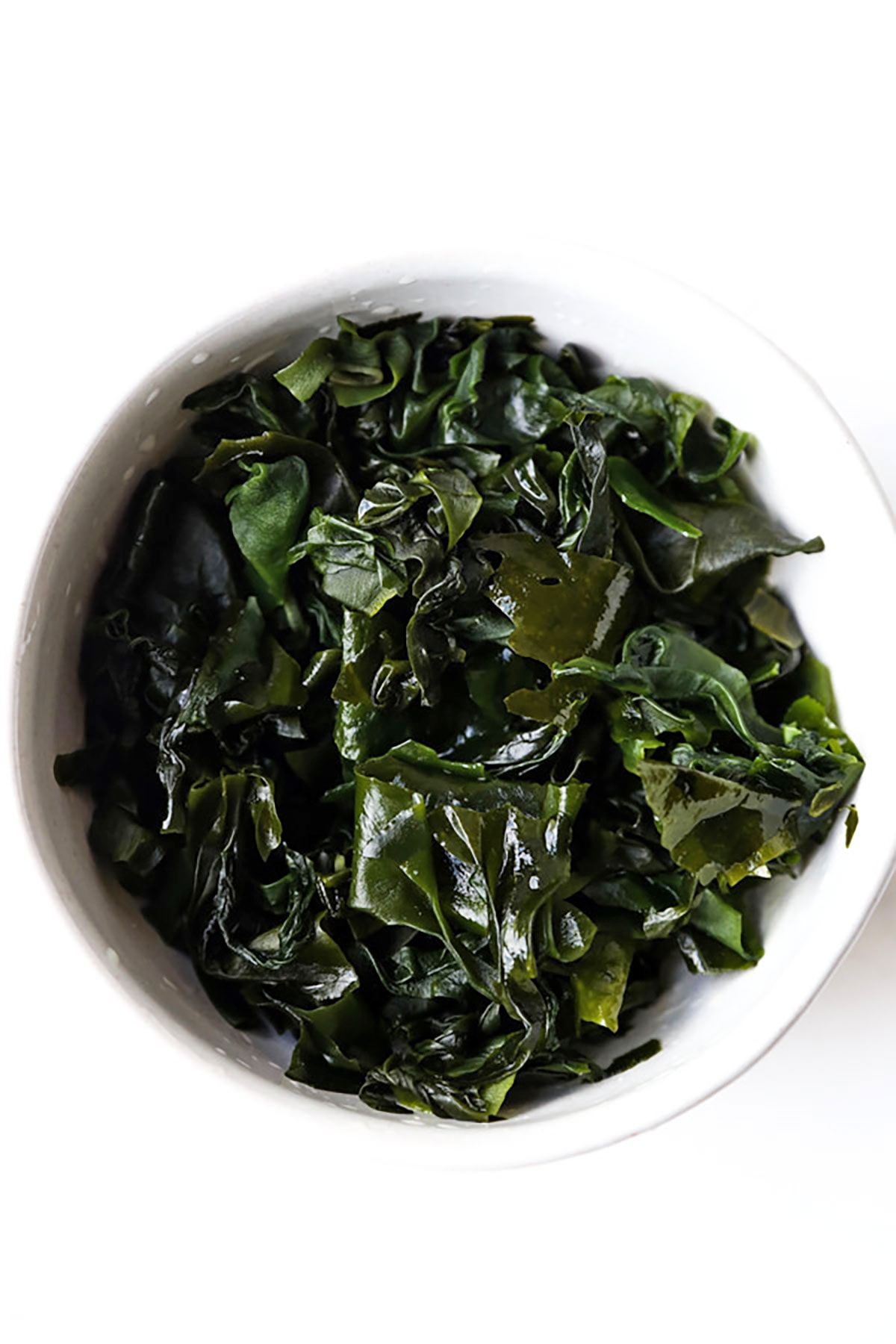
How To Make Sunomono
- Thinly slice your cucumber, place it in a bowl and sprinkle a little salt over it. Toss the cucumber with your fingers and let sit for 15 minutes.
- Pour any liquid that’s sitting at the bottom of the bowl and gently squeeze the excess water from the cucumber slices.
- Soak the wakame in cold water for a few minutes, drain well and add it to the cucumber slices.
- Whisk in all the ingredients for the dressing into a bowl add it to the salad, together with the sesame seeds.
- Toss well, transfer to small serving bowls and top with shirasu. Enjoy!
Cooking Tips
- The best and easiest way to thinly slice a cucumber for this type of dish is with a Japanese mandoline (this is the one I use, which is available on Amazon). It’s light and easy to handle, and the blade is sharper than a French mandoline.
- Sprinkle a little ichimi on top of the salad to give it some heat.
- Serve it with a few slices of sushi grade sashimi, such as octopus, salmon, or tuna.
- Top with chopped scallions for a little sweetness and a refreshing crunch.
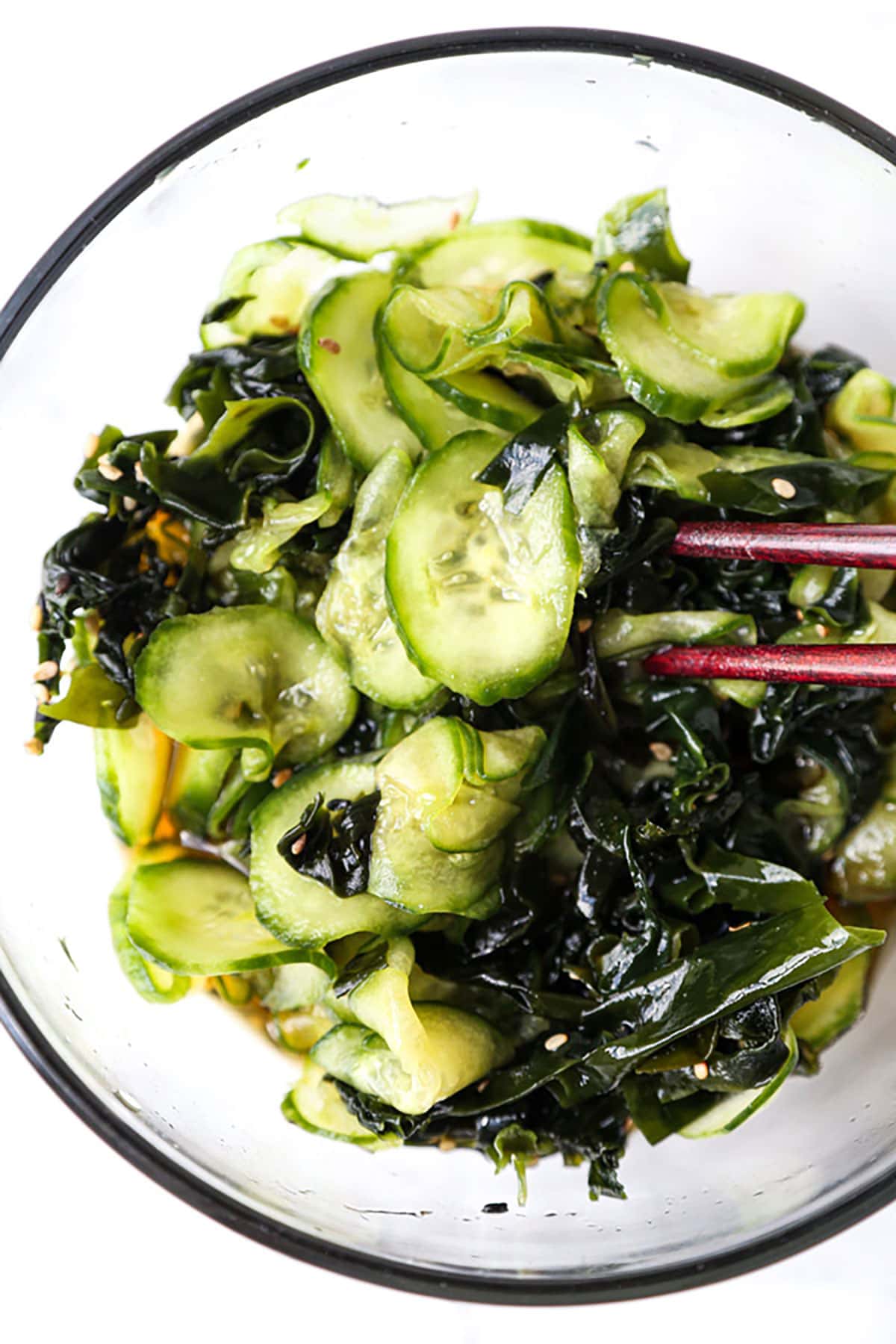
Storage
Sunomono can only be stored in the fridge for 1 day as the texture of the seaweed will degrade and get slimy over time. If you love it as much as I do, you can pre-slice the cucumber and make the dressing, saving them separately. Keep them refrigerated until you are ready to eat the salad. All that will be left to do is to soak the wakame.
Frequently Asked Questions
No, sumono isn’t gluten-free because it contains soy sauce. However, it can easily be made gluten-free by swapping soy sauce for tamari or liquid aminos.
The term sunomo refers to vinegar based dishes, whereas namasu are foods that have been marinated in vinegar.
There are several types of sunomo available but the more common ones are kuri-su (cucumber), tako-su (octopus), kaiso moriawase-su (seafood variety), kani-su (crab meat), daikon-su (daikon radish), and more recently, natto-su (fermented soybeans).
Shirasu are baby sardines commonly eaten in Japan as a topping for salads or as part of a chirashi meal. They are especially popular in Enoshima, as small island located about an hour away from Tokyo, where you can find restaurants specializing in shirasu dishes.
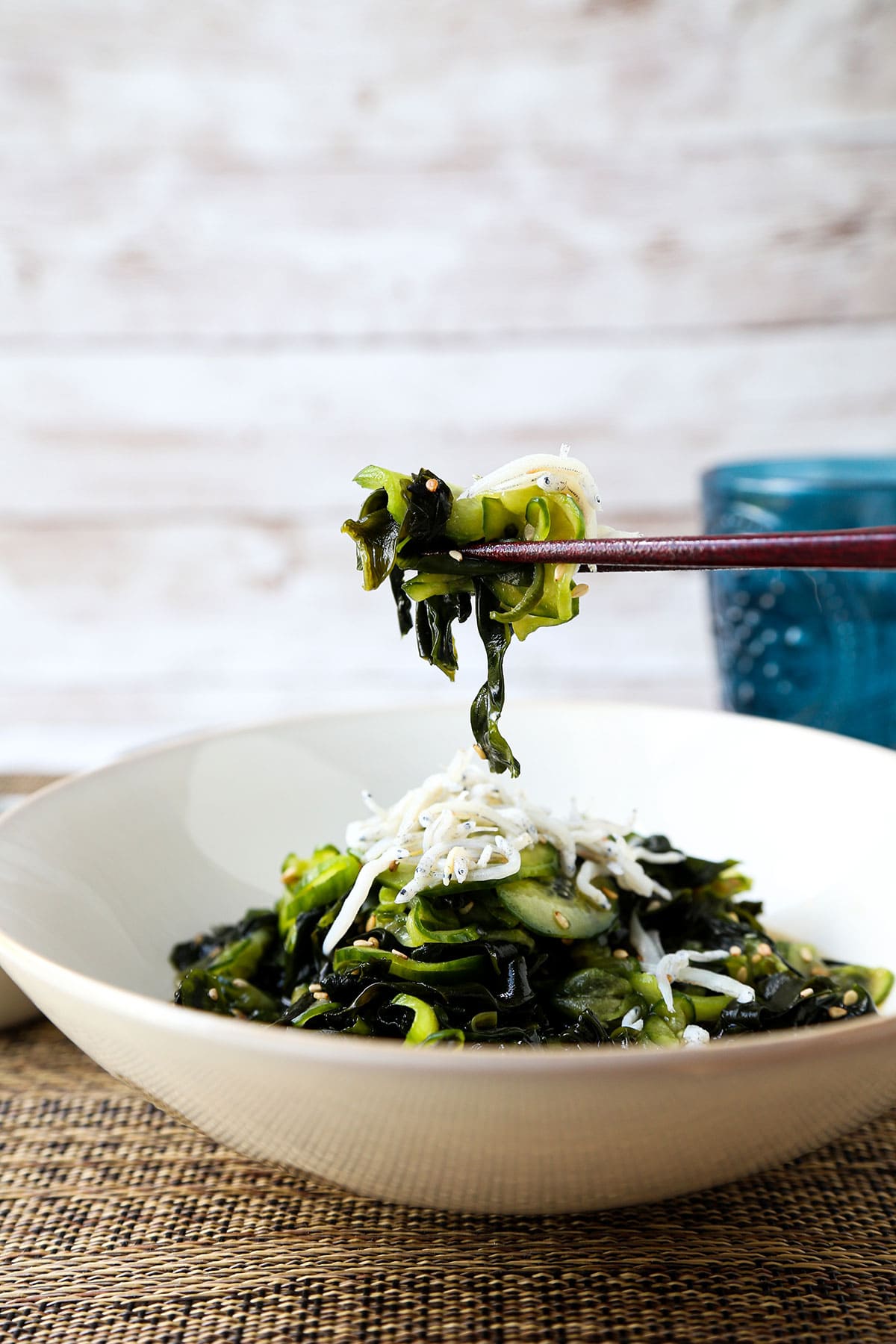
What To Serve With Sunomono
This Japanese cucumber salad is quite light so you can serve it as a side or as part of a meal, with dishes that are more filling (I recommend sticking to a Japanese menu since the flavors of the salad are so distinctly traditional) such as:
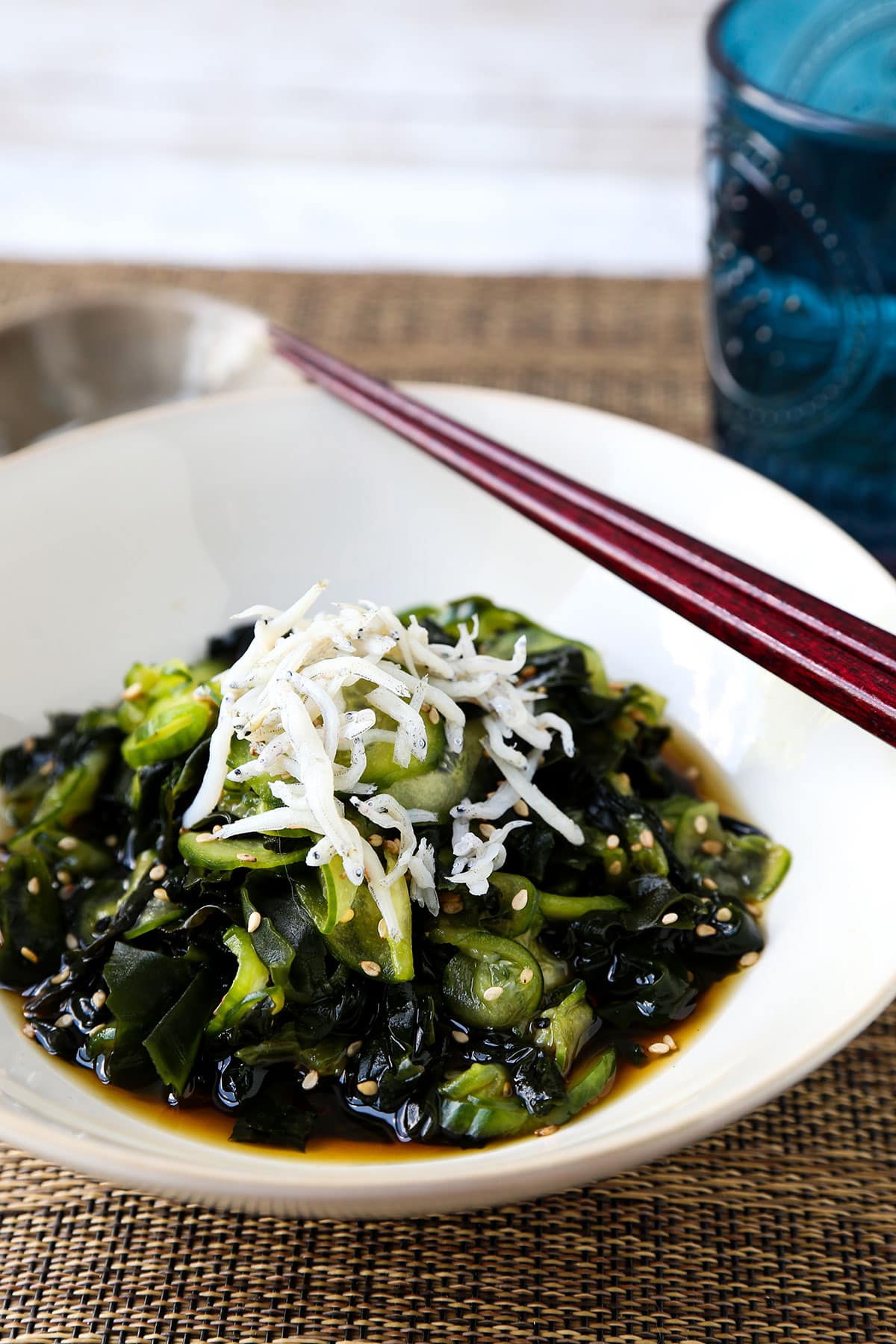
Subscribe to my newsletter and receive the latest recipes and weekly favorites straight to your inbox. Join me on Pinterest, Facebook, and Instagram for more cooking tips and adventures!
Have you made this recipe? Are there changes you made that you would like to share? Share your tips and recommendations in the comments section below!
Print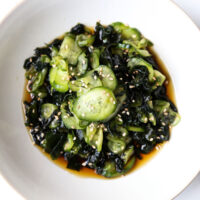
Japanese Sunomono Salad
- Prep Time: 5 minutes
- Cook Time: 0 minutes
- Total Time: 20 minutes
- Yield: 2 to 4
- Category: Salads
- Method: Mixing Bowl
- Cuisine: Japanese
- Diet: Low Calorie
Description
Sunomono is a Japanese cucumber salad served with wakame and a vinegar and soy sauce based dressing. This is an easy recipe that only requires 7 ingredients and 20 minutes!
Ingredients
- 1 Japanese cucumber or 2 medium Persian or Kirby cucumbers
- 1 1/2 tablespoon dried wakame (seaweed), about 3 grams
- 1/2 teaspoon sesame seeds
- 2 tablespoons shirasu (boiled, salted whitebait), optional
Dressing:
- 3 tablespoons plain rice vinegar
- 3 tablespoons dashi broth
- 2 tablespoons soy sauce
- 1/2 tablespoon mirin
Instructions
- Peel cucumber so it has alternating green stripes and thinly slice into rounds. Place in a mixing bowl and sprinkle about 1/4 teaspoon salt. Let sit for 15 minutes and squeeze the water out using your hands. Return the cucumber slices to the bowl and set aside.
- Soak the wakame in cold water for 5-6 minutes, or according to the directions on the package and drain. Add the wakame to the cucumber bowl along with the sesame seeds.
- Mix all the ingredients for the dressing and pour over the cucumber and wakame. Toss using chopsticks and serve, or top with shirasu and serve.
Notes
Wakame gets slimy if it’s left in liquid or dressing for too long. Because of that this salad is best eaten fresh.
Nutrition
- Serving Size: 1 serving
- Calories: 48
- Sugar: 3.7g
- Sodium: 1135mg
- Fat: 0.6g
- Saturated Fat: 0.1g
- Unsaturated Fat: 0.2g
- Trans Fat: 0g
- Carbohydrates: 7.1g
- Fiber: 0.8g
- Protein: 3.2g
- Cholesterol: 0mg
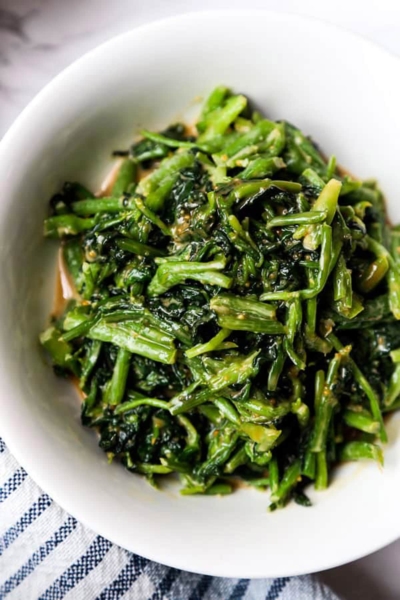
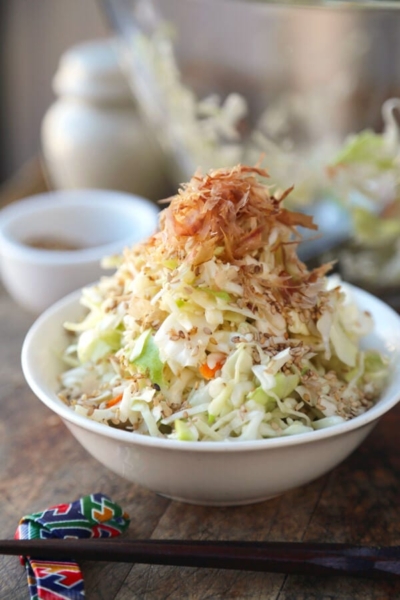
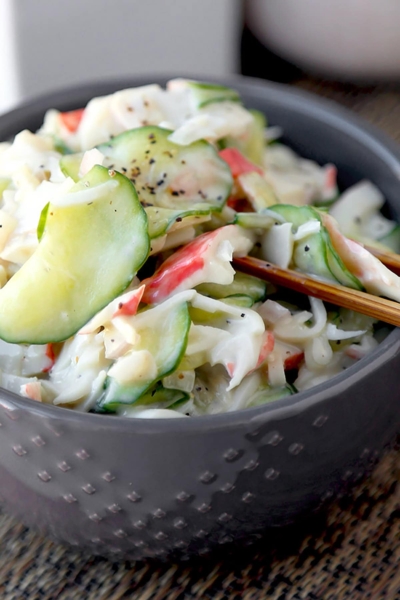
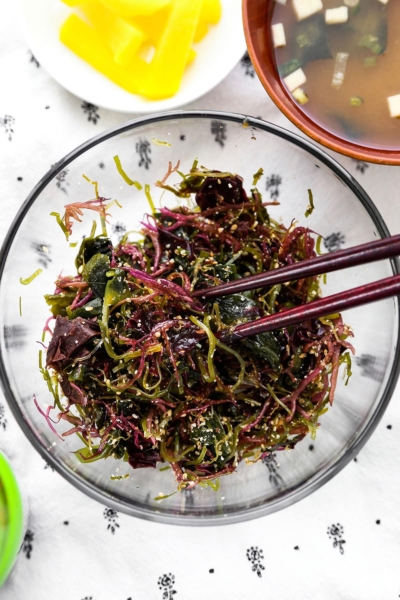


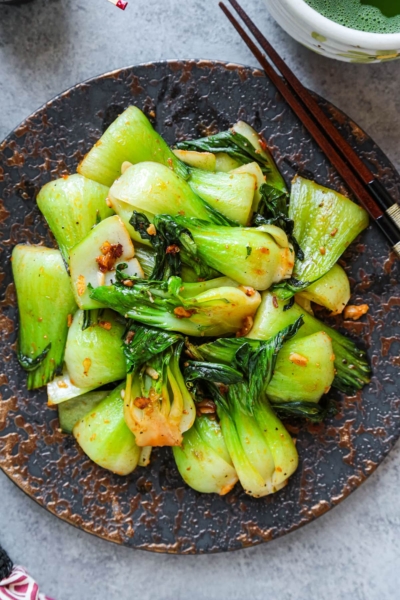
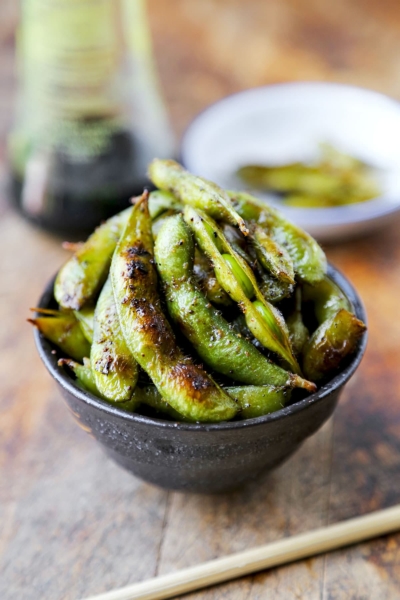

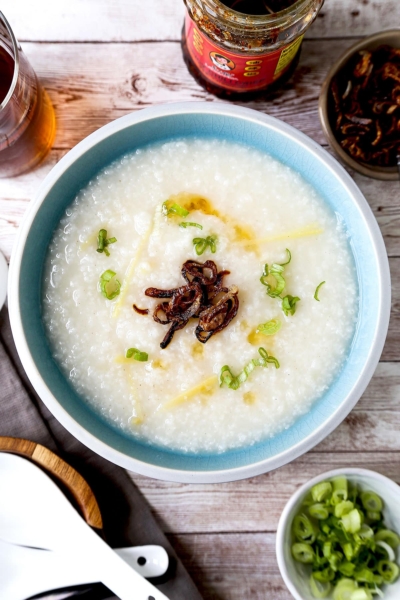
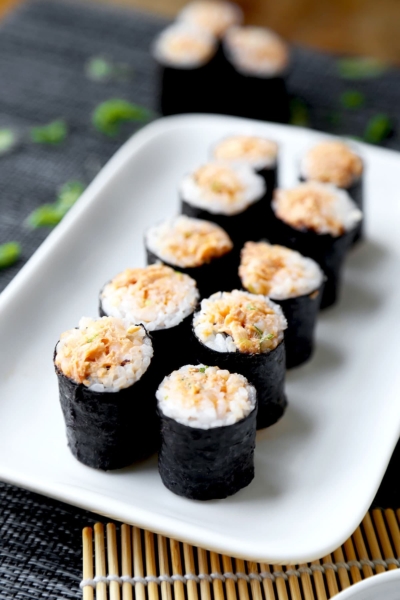








Questions and Reviews
Loved the recipe! And, the dashi adds something extra. Will always use it from now on. I’m thinking the Kirby is confused with English cucumbers, the latter being smaller in diameter, more like the shorter Persian, than Kirby. Perhaps Kirbys are to be preferred in sunomono for their crunchiness.